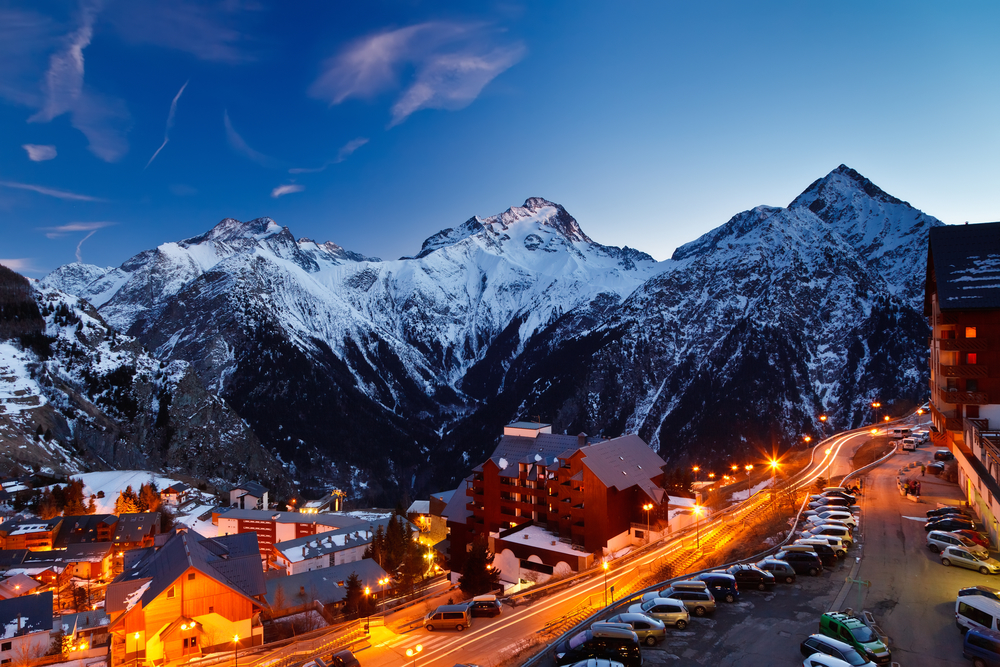
Winter Lodging and Ski Resort Maintenance
The Christmas-New Year break is over and now it is time for many to get down to some serious skiing. If the first week of January was any indication, then the next 2 months should see plenty of snow and cold weather, perfect for ski resorts and winter lodges.
Let it Snow
The coming snows should be good news for ski resort and lodge owners as they try to recover from a slow season in 2011. On the other hand, unless they have kept the premises in good condition utilizing a CMMS system, the increase in revenues could be offset by unplanned maintenance and repairs.

When Maintenance Has Not Been Performed
In a nutshell, when maintenance of assets in harsh weather environments has been delayed or neglected, Mother Nature begins an accelerated attack on the working condition and longevity of assets.
Metal, plastic and wood components are subject to repeated freezing and thawing. This constant expansion and contraction of parts produces micro fractures that will grow and eventually cause the part to fail.
In addition, when snow melts the water produced acts as an accelerator for corrosion. Left unattended, corrosion can cause asset failure, increasing liability as well as capital budget demands.
20 Winter Lodge and Ski Resort Assets to Inspect with a CMMS
Hopefully, last year’s soft revenue did not keep lodge owners from cutting back on preventive maintenance but if it did, ski resorts and lodges can still perform inspections to ensure safe and profitable operations.
Below is a list of 20 winter lodge and ski resort assets that should be inspected before, during and after the winter season. In some cases the assets should also be inspected during the off season to ensure maintenance can be performed before guests arrive.
- Ski lifts: Inoperable ski lifts equals no revenue for lift passes. Constantly broken down ski lifts will have guests going to a neighboring mountain. Check the entire line for corrosion, lubrication and for structural defects.
- Furnaces: Includes wood stoves, fireplaces and assets designed to heat lodges. Chimneys should be inspected for soot build up, fuel lines should be scheduled for cleaning.
- Emergency paths, fire trails: Mountain rescues are common, trails should be kept open to expedite emergency operations.
- Avalanche barriers: Annual inspection of avalanche barriers should be done. Every year snow build up causes a few minor and at least one major avalanche. Barriers should be sturdy and structurally sound.
- Ski/snowboarding runs: Daily inspections of ski runs should be conducted to check for bare patches, debris and other obstructions that could cause an accident. Inspections can determine if maintenance on snow producing assets are required.
- Hotel rooms: As with all hotels, guest rooms should be clean, free of odors and pests. All room HVAC and vents should be inspected. Filters should be changed as scheduled by a system.
- Boilers, chillers: Hot water is a must but it is also very energy consuming. Boilers should be inspected for cracks, faulty valves and cleaned of any soot build up as this can significantly lower energy efficiency as well as increase the amount of downtime the unit has.
- Safety/emergency equipment: Snow mobiles, snow shovels, snow blowers, ice hammers, fire extinguishers, emergency exits should be inspected to make sure they are where they are supposed to be and also in working order.
- Hot tubs: Hot tubs are now common place in ski resorts and winter lodges. These assets should be inspected to ensure their safe operation as well as making maintenance is performed to make sure they are as energy efficient as possible.
- Roofs: Heavy snow buildup on roofs may look pretty but it poses a danger to the occupants under it. Roofs must be kept clear of any significant snow buildup. Lodge premises should also be inspected for ice dams and roof leaks. Inspections of roofs should be performed daily.
- Plumbing: Freezing temperatures cause pipes to freeze and burst. A burst pipe can cause hundreds of thousands of dollars in damages. Pipes and lines should be insulated, All valves need regular inspections.
- Snow makers: Snow makers are used to enhance conditions during drier spells and also for patching worn or barren spots on trails. Keeping them operable is easier when maintenance is scheduled with a CMMSprogram.
- Snow removal equipment and de-icing equipment: A “Snowicane” like the one that recently dumped 18 feet on Cordova, Alaska can easily overwhelm a lodging facility that is unprepared. Inspections will ensure all equipment is available and in working order.
- Kitchens: Kitchens are one of the most energy intensive asset areas. Broilers, ovens, freezers may need to have fuel lines inspected, grease lines cleaned, refrigerants checked and energy usage monitored.
- Commercial dryers: Wet clothes after a day or night of skiing will need to be dried. Guests may attempt drying near fireplaces, furnaces or make use of the facilities clothes dryers. Lint collectors should be scheduled for constant inspections.
- Lighting (night skiing): Many resorts offer night time skiing. Lighting on all trails should be checked to minimize danger and potential liability.
- Generators: Heavy snow and ice are common causes of power failures. Backup generators should have adequate inspections and preventive maintenance to ensure their operation in case of emergency.
- Ski rental shacks: Sometimes the smaller buildings create the highest risk. Separate ski rental buildings or other buildings should be safely maintained.
- Common areas: Top of runs, benches, bars, lobbies etc. should be inspected for loose railings, broken parts and generally free of hazards.
- Air handlers: Warm air is a requirement for all wintertime resort areas. Heat distribution systems should be kept clear of air obstructions. The most common method is scheduling regular preventive maintenance such as changing air filters which can clog airways.
The list above only touches on the thousands of ski lodge assets that require periodic inspections. Keeping track of all assets to ensure safety and operational efficiency is best done with
lodging CMMS.
CMMS programs help resort maintenance management to always know where their assets are and the condition they are in.







